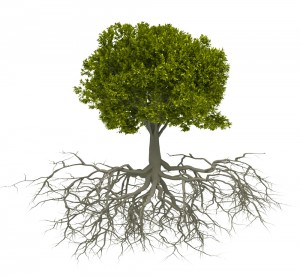This week I want to give you some ideas for when and how you can use tapping effectively in your daily life. I use tapping all the time and I have found two distinctive ways to tap.
1. ‘First aid’ tapping
This is the simplest way to use tapping. With ‘first aid’ tapping we tap in the moment (or shortly afterwards) when we get emotionally triggered. I use it when I feel anxious about things (maybe nerves about doing something new / stepping out of my comfort zone), when I feel judged / get things wrong and I feel bad about it. If I’m feeling ‘off form’ I tap. If I come away from a conversation triggered. I tap. Why? I like to feel good as much as possible. Simple.
I also tap for physical discomfort. For example, if I have indigestion, I find that tapping eases it faster than anything else. I also use it for headaches and colds. For me, if I’m not getting quick results, I check my emotional reaction and tap on that. Mind you, sometimes e.g. with colds, the physical symptoms can be stubborn. If that’s the case I tap to move through it with greater ease.
Did you know that you can tap when in public? There are meridian points at the ends of the fingertips that are really effective for this – and it’s discreet (see the end of this weeks video for details). I often tap in public this way, or find a rest room and take a 5 minute tapping break if I can.
For first aid tapping you will get better results when
- you’re specific and really tune in to the emotions that you are feeling
- you keep it about YOU and how YOU feel (e.g.if other people are involved in the situation focus on that that makes you feel)
First aid tapping brings us relief in the moment, it helps us cope and get through a difficult moment. Yet, it may not be enough to bring lasting change. For that we need to address the underlying patterns and beliefs that run our lives.
2. Tapping on the underlying issues and beliefs
This is where tapping gets really powerful and where we get to the ‘root’ of our problems. I have touched on this in a previous post, but I can never say it enough. What’s showing up in our lives (in our health, finances and relationships) and is triggering us now usually stems from our subconscious beliefs and we need to get to the core of that to have lasting change.
The Tapping Tree.
A great model for this is the idea of the ‘Tapping Tree’, that I came across in tapping expert Nick Ortner’s new book (the concept was originally known as the trauma tree and created by EFT expert Lindsay Kenny).
- The leaves are the symptoms and side effects.
- The branches represent the emotions.
- The trunk represents the events that caused them.
- The roots represent the limiting beliefs at the core of the issue.
In order to get to the core of your issues, especially deep issues, it takes consistent focus – to tap through the memories that the beliefs are based on and really clear those associated thought patterns. You can do this alone, but I strongly recommend working with a practitioner for those big issues or if you aren’t getting the results you want when tapping alone.
I get much better results on those BIG issues when I work with someone else, rather than trying to do it all by myself. It’s just so hard to see your own blind spots and patterns and the journey is made so much easier by having an ally to support you (and a trained practitioner, such as myself, who has the tools and experience to get you safely through those emotional quagmires) and hold you accountable to making changes.
If you want help with tapping through your deep issues either email me at info@thethoughtgardener.com or call me on 00 353 49 433 3009.
This weeks video goes back to basics, giving an overview of the tapping points and process – with a few extra tips at the end.
Click on the picture below to watch the video or click here if you don’t see the picture.
Now I’d love to hear from you. If you’ve tried tapping, when has it worked best for you? When have you not seen the results you wanted?
Leave your comments under this blog post. Thank you.
If you liked this post, share it. If you aren’t on my mailing list, sign up on the home page so you can get my newsletter and posts delivered straight to your inbox.


Thank you for the recap, Ferris! It’s really helpful to have the basics of tapping all in one video, and the mention of the more discreet meridian points on the hand is great, too. I learned about these points with a local practitioner, and I used them (to the best of my knowledge) this past week when I had a less-than-ideal interaction with one of my colleagues. I found these points on the finger really helpful in getting me through the rest of the day until I was able to be at home and do a full-on EFT session with myself.
Hi Dana, it’s great to hear how you used the finger points to help get you through a tough day until you could get home. Yay. I find them REALLY useful when I’m out and in less than ideal situations.